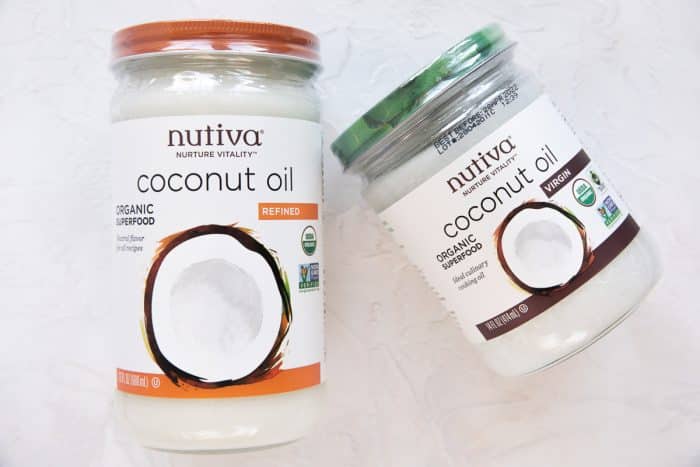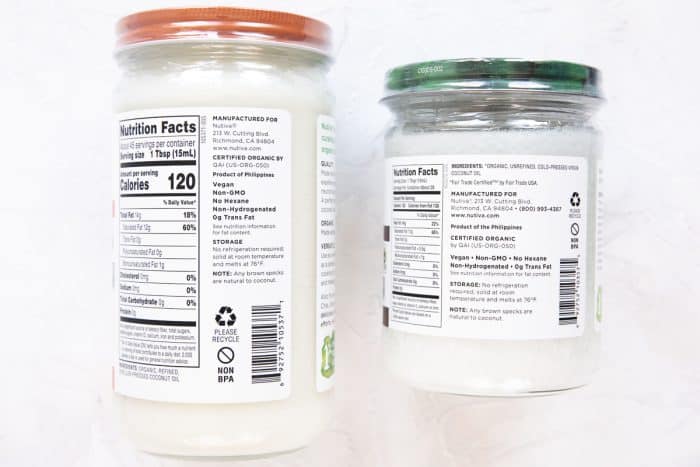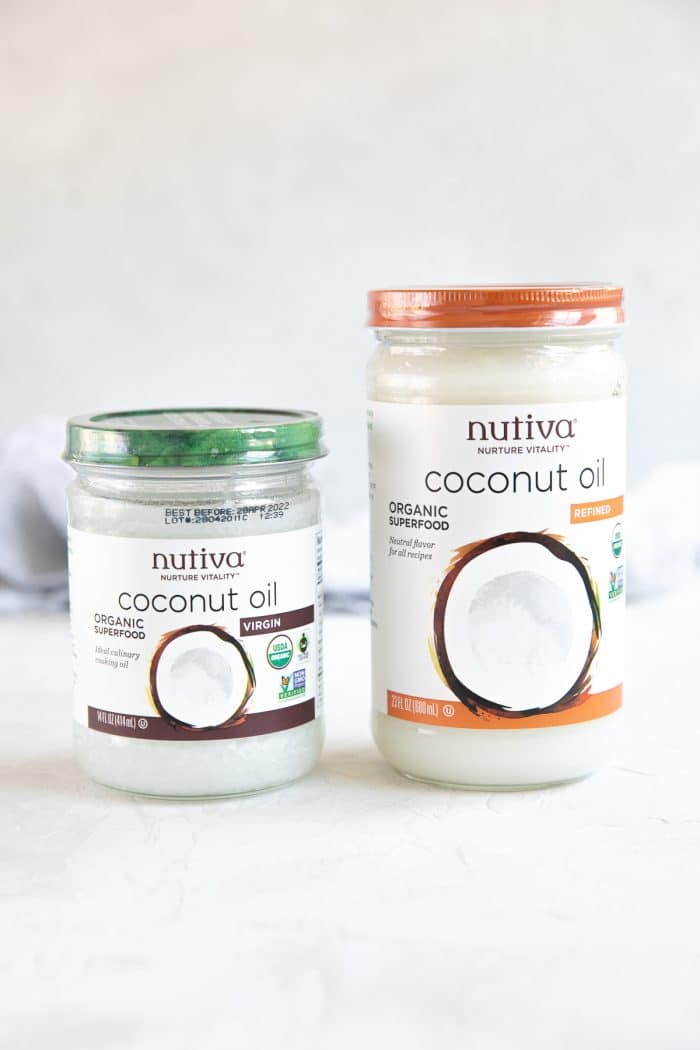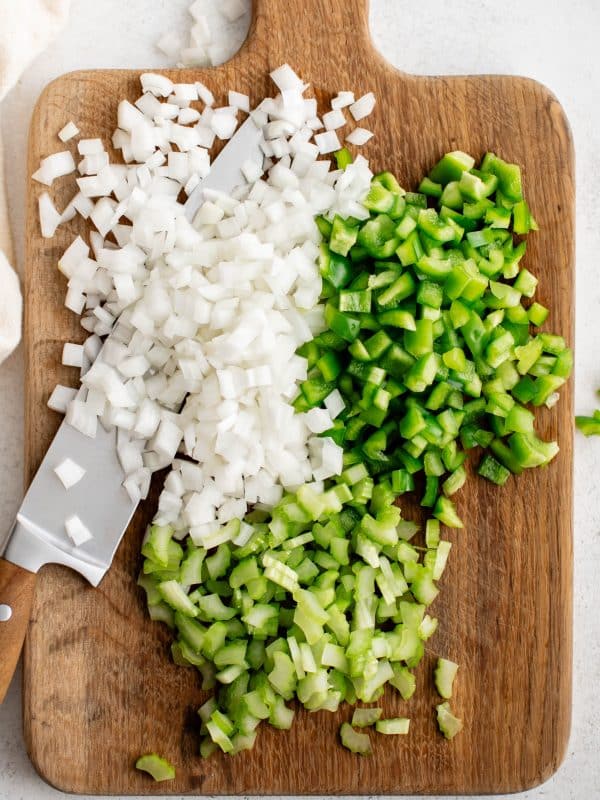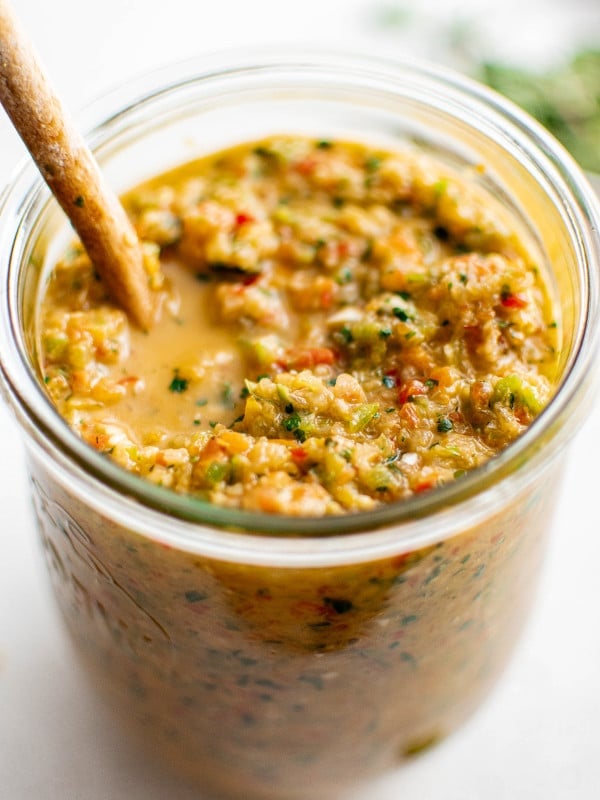This post may contain affiliate links. Please read our disclosure policy.
Fresh coconut oil has been a health food phenomenon for at least a decade now, and its numerous health benefits go far beyond the kitchen. But not all coconut oil is created equal. Here’s what you need to know about the difference between refined vs. unrefined coconut oil.
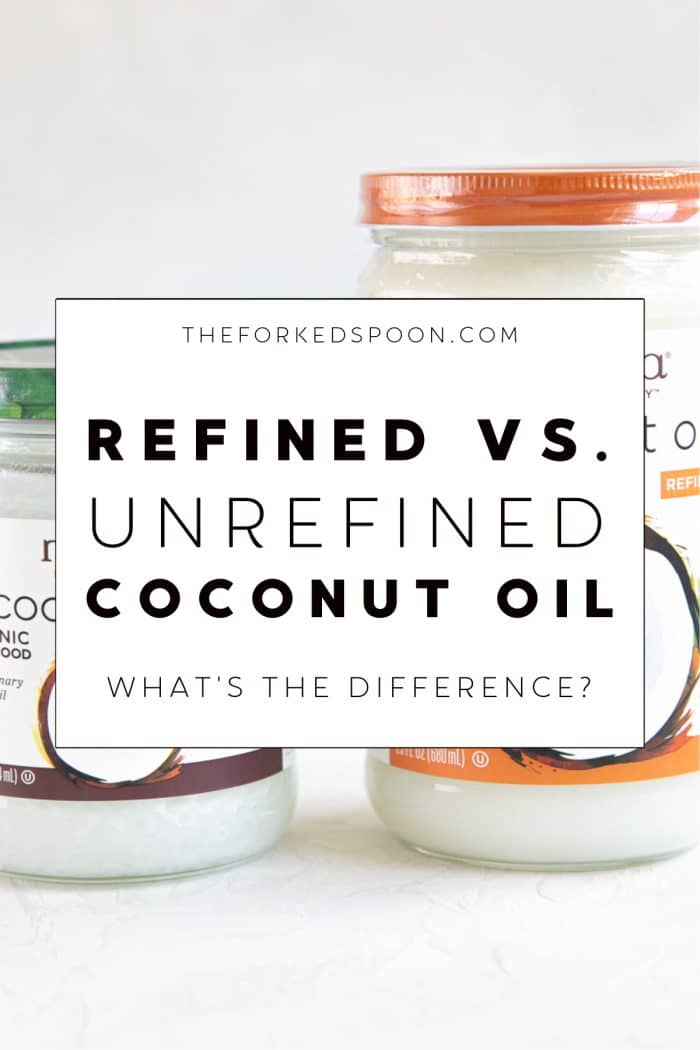
Refined vs. Unrefined Coconut Oil: What’s the Difference?
Advocates sing its praises as a source of healthy fats, good for sautéing and roasting as it is for skin care and oral hygiene.
One glance at the numbers and this product’s popularity speaks for itself.
According to a report from Market Research Future, the global coconut oil market is estimated to grow to over $5 billion by 2024, expanding at an impressive annual rate of 9.5% nearly every country is getting in on the boom.
But selecting the right coconut oil for your needs isn’t exactly cut and dry. This product is available in several different varieties on the shelf and can be found in jars, bottles, pouches, and more.
The most common two types of coconut oil fall into the following categories: Refined vs. Unrefined Coconut Oil. You may also see the term Virgin Coconut Oil on labels, which generally means a raw, unrefined oil.
What’s the difference between them, and which one is best for you?
We did some digging and put together the need-to-know facts about each.
Let’s get to it!
What is Coconut Oil?
Coming from the wonderful coconut palm Cocos Nucifera, coconut oil is the rich and luxurious liquid extracted from the meat of the coconut, also known as Copra.
The oil itself can be obtained through a dry or wet process, each with its own advantages.
- Dry Process: The traditional method of production found in many tropical cultures. Copra is extracted, or the expeller, by heating up coconuts by fire, kiln, or sunlight. The oil is then pressed out of the meat, and a fibrous mash is left over, then typically disposed of.
- Wet Process: Also known as centrifugal processing, this is the modern industrial version of production by which both the milk and the meat of the coconut are utilized. Numerous enzyme and chemical treatments are used in order to speed up production, but the overall yield is still lower than that of the dry process giving it longer shelf life.
According to small-batch British Coconut Oil producer Three by One, dry production generally results in a higher-quality product, although it comes with a higher price tag.
The wet or dry production has no impact on whether an oil is classified as refined or unrefined. But keep in mind that wet process oil can include some unwanted compounds, and is more prone to become rancid due to higher levels of coconut milk.
Unrefined Coconut Oil
Knowing the basics of wet vs. dry production, let’s talk about the properties of unrefined coconut oil, also known as virgin coconut oil.
The key thing to know here is that unrefined coconut oil maintains the essence of the coconut itself, meaning it keeps that unique, pleasant flavor and aroma fully intact.
When browsing unrefined coconut oils at the store, keep in mind that these products are not as regulated or scrutinized as the strict olive oil industry.
That means that there is no precise definition of what is considered to be extra virgin coconut oil. You’ll have to do some investigation of your own to determine how the oil is processed and reach your own conclusions.
As a general rule, look for products with only one ingredient: organic coconuts. Sticking with this strategy will help you avoid the pitfalls of unsavory chemicals and additives.
Refined Coconut Oil
The notion that all refined fresh coconut meat oils are loaded with chemical solvents is a myth we need to debunk upfront. You can find quality refined oils that undergo gentle steaming rather than a dubious industrial process.
You’ll find is that refined coconut meat oil is a clean and light alternative to other vegetable oils that may carry unwanted flavors or odors.
The right refining process coconut oil offers an excellent neutral scent and flavor, which can serve to showcase fresh meats and vegetables in all their glory!
Nutritional Differences
Just like any other health-food trend, coconut oil has been met with plenty of criticism to counterbalance its highly vocal proponents.
Dr. Robert Shmerling from Harvard Medical School argues that not enough evidence has been gathered to suggest that coconut oil is really that “heart-healthy” compared to other ingredients.
Others in the medical community argue that the MCTs (medium-chain triglycerides) found in both refined and virgin coconut oil are hugely beneficial for heart health thanks to the fatty acids, as well as fighting inflammation and combating joint pain.
We say that you should treat coconut oil just like any other cooking fat. Use just enough to enhance your food, but don’t go overboard, and you’ll be fine!
Be aware that some refined coconut oil comes with health concerns that should not be ignored. Virgin oils tend not to have these dangers.
For instance, some of the cheaper products undergo the process of hydrogenation, which can result in boosted levels of trans fat and reduced amounts of micronutrients.
Just remember to read the labels and look out for warning signs (like the word hydrogenated), and you should be in the clear.
One thing is for sure, coconut oil is a better pick than canola oil or peanut oil when sautéing and frying your veggies and proteins. It may not be 100% perfect, but at least you will avoid the many proven downsides of those other options.
Uses in the Kitchen
Enough technical babble, let’s get into the good stuff: cooking with coconut oil!
Here’s a basic question to ask yourself before selecting a coconut oil for your recipe: do I want this dish to have a coconut flavor or not?
If adding coconutty flavor is your goal, go with the unrefined virgin oil, since it still contains the essence of the copra. Just keep in mind that unrefined coconut oil has a lower smoke point (350 degrees) than its refined counterpart (approx. 400 degrees).
Just picked up your first bottle of coconut oil? We suggest starting small with our easy coconut rice because it takes full advantage of the coconut flavor in unrefined oil. It makes a great side dish for chicken thighs or stirs fry.
Want a low-carb rice alternative that still satisfies? Use coconut oil in our cauliflower rice, and you can go completely guilt-free while enjoying all the same flavors.
If you want a healthy meal that pleases everyone in the house, you absolutely have to go with our Mahi Mahi recipe. It is a nutritional powerhouse that everybody in the family can enjoy.
When you’re ready to take on something a bit more complicated, check out our recipe for pineapple coconut Thai fish curry. It has all the sweet and spicy goodness we love from Thai cuisine, and full-flavored coconut oil is a must.
Sometimes you want to steer away from the meat-heavy meals and go full vegetarian, and coconut oil is the perfect way to add some healthy fats. For that, we recommend our bok choy recipe.
Time for dessert? You owe it to yourself and your family to bake a batch of our raspberry cookies. Sure, it may not be as healthy as a Buddha Bowl, but you need something warm and sweet every now and then, especially when you want to showcase the power of the almighty coconut!
You can even use organic coconut oil for breakfast, and our recipe for easy baked oatmeal is the perfect healthy start to your day. This gluten-free, dairy-free, and vegan dish is the ultimate morning fuel for the whole family, and you can even go big-batch to grocery store leftovers in the fridge.
Other Applications
Part of the fun of coconut oil is experimenting with other interesting uses.
Some people advocate oil-pulling, which is an ancient oral hygiene technique meant to kill bacteria by swishing coconut oil around your mouth for fifteen minutes.
Others say that a certain type of coconut oil makes for great skin and hair deodorized moisturizer. Just be aware that you may smell like coconuts for a while if you go with the unrefined oil. Maybe that’s what you’ve been looking for all along!
Try it for chapped lips or for cuts and scrapes as a disinfectant. Use it to remove makeup or add a glistening varnish to your wood furniture. There really is no downside to using this all-natural ingredient anywhere and everywhere.
Conclusion
If you couldn’t tell already, we can’t proclaim our love for coconut oil loud enough!
With so many amazing recipes featuring unrefined extra virgin coconut oil, and the many uses of the neutral, refined stuff, you need to pick up a bottle of each type ASAP.
Whether you’re trying to make a perfect Thai Curry or batch of muffins, or just frying up a piece of fresh-caught fish, you simply can’t go wrong with either type.
Once you start using coconut oil for breakfast, lunch, and dinner, you’ll be wondering why you didn’t grab it off the shelf sooner!
